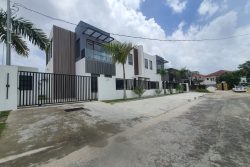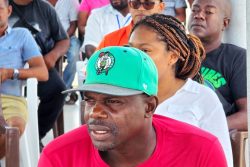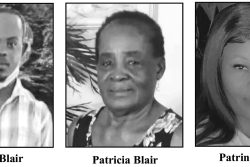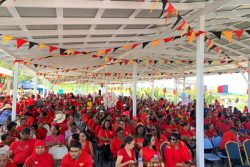For some years Guyana held the dubious distinction of being the suicide capital of the world by virtue of a staggering suicide rate of just about 44 persons per 100,000 in 2012. With a population of under a million persons, the intensity of the problem was easily seen, and both the government and social groups went on a public education offensive in an attempt to reverse this deadly trend.
Since then, Guyana has seen both a reduction in the rate of deaths by suicide and a slightly favourable increase in our ranking against other countries in the world, initially moving from first to fourth place, but then sliding back to second place according to the most recent statistics with a current suicide rate of 30.6.
This mild improvement in the suicide rate gives hope that some amount of traction is being gained by the suicide prevention groups across the country; however, it neither gives cause for celebration nor complacency, and current anti-suicide efforts must continue at the very least, if not increase significantly.
In a recent focus on female suicide, the BBC produced a brief video referencing the work on suicide prevention being carried out by Guyanese singer and former Miss Guyana World, Lisa Punch. Ms Punch has been actively involved in public education and spreading a message of hope to children in schools, some of whom have shared their experiences on camera about having thoughts of suicide. It should be noted, though, that while the BBC’s headline of the under 3-minute video referenced women and suicide, Ms Punch’s own efforts seem focused on the more gender neutral ‘Prevention of Teenage Suicide’ – also the name of her Facebook page.
Indeed, overall men are more likely to commit suicide than women, with two-thirds of the world’s suicides being committed by men. However, Guyanese psychologist Caitlin Vieira, writing for the online news site Demerara Waves posited that, in Guyana, “Females attempt suicide up to 4 times more than males but males are more successful in their attempts.” Determining the causes and reasons why persons commit suicide is very difficult, but depression, psychosis (inner voices), drug induced impulses, philosophical (e.g. due to presence of a terminal illness), and peer-induced actions with dangerous consequences, are among the leading stated causes. The primary reason for suicide in a large number of cases, however, is the absence of hope, and this is where public education and the personal testimonies of persons with public profiles, like Ms Punch, can go a long way in reassuring silently suffering young people that there is a light at the end of what may seem a pretty dark tunnel.
In Guyana and in many countries around the world, suicide is recognised as a mental health issue, and indeed incidences of self-harm cannot be addressed without a consideration of the individual’s mental state at the time. In this regard the World Health Organization (WHO) has instituted a Mental Health Gap Action Programme aimed at a providing a definitive intervention guide for persons suffering from mental, neurological and substance abuse disorders across communities, age groups, and income levels in all countries. In 2015, seven physicians from Guyana participated in an online course, ‘Integration of Mental Health Care’ based on the mhGAP Intervention Guide by way of PAHO’s Virtual Campus for Public Health platform. Guyanese Dr Krystle Fraser, summed up the experience of the training in this way, “I am better able to manage depression, using not only medication, but also Psychoeducation.”
Psychoeducation refers to the provision of education and information persons with mental health issues, including those with life-threatening or terminal illnesses and their family members, or, indeed, anyone desiring mental health services. It is defined as “an evidence-based therapeutic intervention for patients and their loved ones that provides information and support to better understand and cope with illness.” The WHO has crafted an Intervention Guide for, “mental, neurological and substance use disorders for non-specialist health settings, [and] is a technical tool developed by WHO to assist in implementation of mhGAP. The Intervention Guide has been developed through a systematic review of evidence followed by an international consultative and participatory process.”
With much work already done in the area of providing the tools for medical personnel to deal more effectively with mental health issues, we hope that enough focus can be maintained to make it public knowledge that persons with mental health issues can contact medical doctors within the Public Hospital system for recourse and treatment, whether it is for the individual or any third party that they wish to bring along. Agencies such as the Guyana Inter-agency Suicide Prevention Hotline (Suicide Helpline) launched by the Guyana Police Force (GPF) should be able to direct callers not only to social services intervention, but also to trained medical intervention as well.
Attempted suicide is still a crime on the books of Guyana, and our legislature should debate such issues so as to determine whether there is a need to have a comprehensive review and change to the laws governing suicide in Guyana. With a shortage of wide ranging mental health services continuing to be a big hurdle to tackling the mental health issues, including suicide counselling and mental health treatment, the GPF must continue to show sensitivity to this issue as they proceed with their investigations into suicides and attempted suicides.
Guyana has committed to the achievement of the Millennium Development Goals (MDG), and while mental health is not specifically listed, it is considered to feature in the MDGs of “eradicating poverty,” “reducing child mortality,” and “improving maternal health.” As such, all available resources must be garnered, particularly those relating to trained medical personnel in order to make a drastic reduction in our suicide rate.









